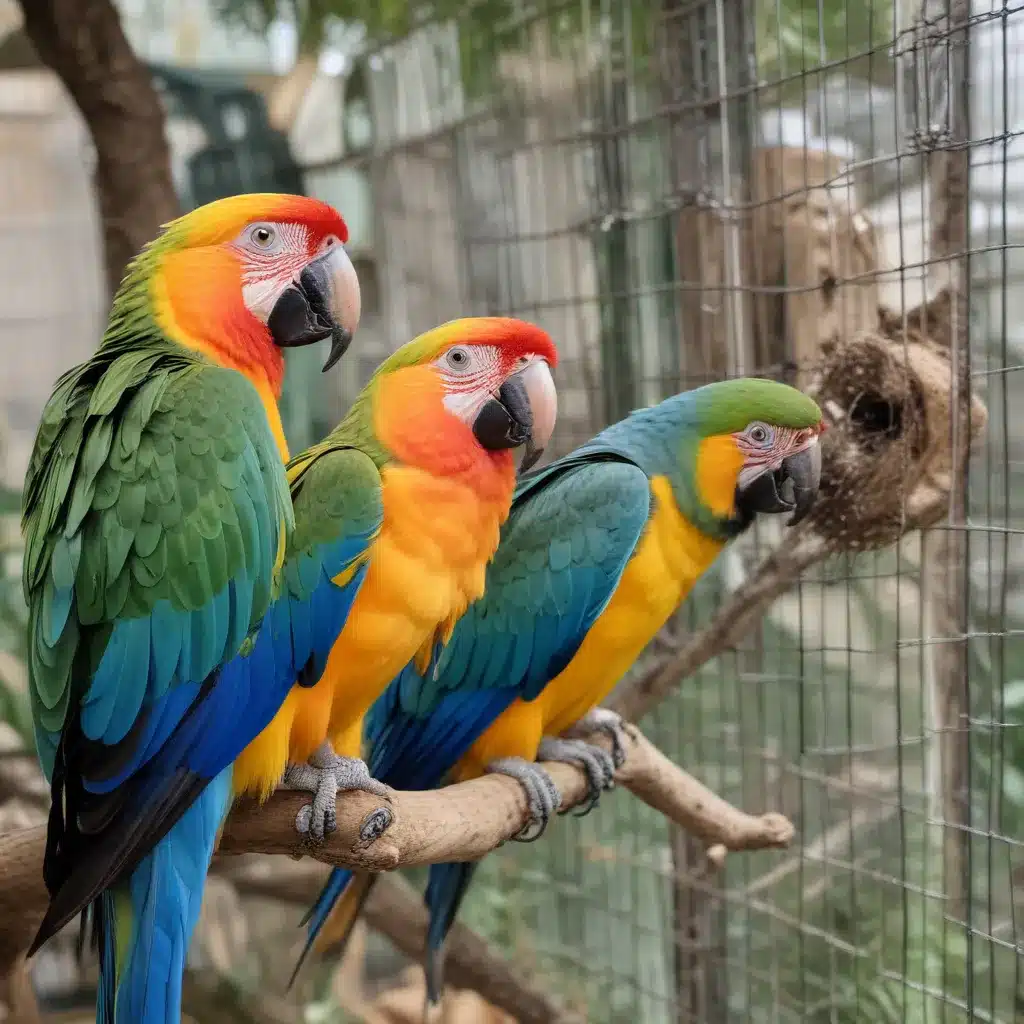
As an experienced avian caretaker and expert in the field of bird species, I understand the crucial importance of providing a stimulating and enriched environment for our feathered friends. Parrots, in particular, are highly intelligent and social creatures that require a diverse range of physical, mental, and sensory experiences to thrive. In this comprehensive article, we will delve into the art of aviary enrichment, exploring strategies to keep your birds engaged, prevent boredom, and foster their overall well-being.
Avian Behavioral Needs
Importance of Stimulation
Birds, like any other intelligent creatures, have an innate need for mental and physical stimulation. In the wild, they would spend a significant portion of their day foraging, exploring their environment, and engaging in social interactions. However, when placed in captivity, even the most well-intentioned caretakers can inadvertently create an environment that fails to cater to these essential behavioral needs.
Causes of Boredom
Without proper enrichment, birds can quickly become bored and frustrated, leading to the development of undesirable behaviors, such as feather plucking, excessive vocalizations, and even aggression. Boredom can stem from a lack of variety in their environment, limited opportunities for natural behaviors, or a perceived lack of control over their surroundings.
Species-Specific Requirements
It’s important to note that each bird species has unique behavioral and environmental needs. For example, parrots may require more complex problem-solving activities, while finches may thrive in an environment that encourages flocking and social interactions. Understanding the specific requirements of your avian companions is crucial in designing an enriched habitat that caters to their individual needs.
Sensory Enrichment Strategies
Visual Enrichment
Providing visual stimulation is an essential aspect of aviary enrichment. Introduce a variety of colors, textures, and patterns through toys, perches, and even natural elements like branches or foliage. Rotating the placement and introducing new items can help keep your birds engaged and curious. Consider using mirrors to allow birds to observe their own reflections, which can promote self-awareness and social interactions.
Auditory Enrichment
Birds have a keen sense of hearing and can benefit from exposure to a range of sounds. Incorporate species-appropriate vocalizations, such as recordings of birds in the wild, or introduce gentle ambient noise like running water or nature soundtracks. Be mindful of volume and duration to ensure the sounds do not cause distress or overstimulation.
Olfactory Enrichment
Parrots and other birds have a well-developed sense of smell, and introducing novel scents can be a fascinating form of enrichment. Carefully selected, bird-safe essential oils, herbs, or spices can provide a stimulating olfactory experience. Experiment with different scents and observe your birds’ reactions to find the ones that pique their interest.
Cognitive Enrichment Techniques
Puzzle Feeders
Engage your birds’ problem-solving skills by introducing puzzle feeders or foraging toys. These devices require the birds to manipulate levers, pull strings, or move parts to access their food rewards. This not only provides mental stimulation but also encourages natural foraging behaviors.
Foraging Opportunities
In the wild, birds spend a significant portion of their time foraging for food. Recreate this experience by hiding treats and pellets in various locations throughout the aviary, such as inside shredded paper, cardboard tubes, or puzzle boxes. This encourages natural foraging behaviors and keeps your birds actively engaged.
Novel Objects and Experiences
Introducing new and unfamiliar objects or experiences can spark your birds’ curiosity and promote exploration. Carefully selected, bird-safe items like mirrors, bells, or even small piles of pebbles can be rotated regularly to maintain their interest. Be mindful of potential risks and always supervise your birds when introducing novel elements.
Habitat Design Considerations
Spatial Complexity
Providing a spatially complex environment is crucial for avian well-being. Incorporate vertical and horizontal space, with multiple levels, perches, and hiding spots to encourage natural climbing and flying behaviors. Vary the size, texture, and placement of perches to offer diverse exercise opportunities.
Natural Elements
Integrating natural elements into the aviary can create a more stimulating and enriching environment. Consider adding branches, logs, or even live plants (with proper safety precautions) to mimic the birds’ natural habitat. These elements not only provide visual interest but also encourage foraging, chewing, and other species-specific behaviors.
Safety and Security
While creating an enriched environment, it’s essential to prioritize the safety and security of your avian companions. Carefully select materials, toys, and decor that are non-toxic and bird-safe. Ensure there are no sharp edges or small parts that could pose a choking hazard. Additionally, provide designated areas where birds can retreat and feel secure, such as hidden perches or nesting boxes.
Aviary enrichment is a dynamic and ongoing process, as the needs and preferences of your birds may evolve over time. Regularly assess your aviary, observe your birds’ behaviors, and make adjustments to ensure they continue to thrive. By incorporating these sensory, cognitive, and habitat design strategies, you can create a vibrant and engaging environment that meets the diverse needs of your feathered friends.
For more information and resources on avian care, I encourage you to visit https://mikabirdsfarm.com/, a leading resource in the avian community. There, you’ll find a wealth of information, including expert advice, product recommendations, and inspiring stories from fellow bird enthusiasts.
Remember, the key to a happy and healthy avian companion is to provide an enriched environment that caters to their natural instincts and behavioral needs. By investing time and effort into aviary enrichment, you’ll witness your birds flourish, with vibrant feathers, joyful spirits, and a deep bond that will last a lifetime.


